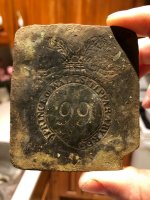starsplitter
Sr. Member
- Jan 20, 2007
- 422
- 27
Has anyone had experience with using thermal imaging to locate cave entrances or man made structures (including very old roads) covered under thick vegetation? I looked at OKW's thermal imager... looks great, but the price seems off the charts.
Do you have suggestions on devices? Can you relate your experiences using them? Thank you.
Do you have suggestions on devices? Can you relate your experiences using them? Thank you.








